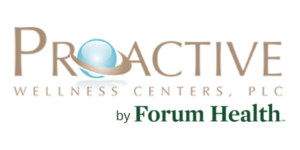Hypothyroidism and Hashimoto’s Thyroid Disease
Did you know that at least one in ten Americans suffer from thyroid dysfunction. The main two conditions we see and treat are Low Thyroid (hypothyroidism) and Hashimoto’s Thyroiditis. Hashimoto’s is an autoimmune condition where the body attacks its own thyroid tissue resulting in the inability to produce sufficient thyroid hormone. In general, thyroid disease is often underdiagnosed or improperly treated by the traditional medical community because standardized testing for thyroid may miss as many as 80% of patients with this condition and standardized treatment doesn’t work for many individuals with Low Thyroid.
What Are Typical Symptoms Of Hypothyroidism?
- Fatigue
- Difficulty losing weight / unexplained weight gain
- Muscle and joint pain
- Cold intolerance (Are you cold when everyone else is normal?)
- Constipation
- Hair loss and brittle nails
- Dry Skin
- Difficulty sleeping
How Do We Diagnose Hypothyroidism?
We diagnose thyroid disorders by using a combination of lab tests and subjective measures/symptoms. The point here is that valid and acceptable lab values are in a range and some patients require higher/lower values than others in order to not have symptoms. We frequently see cases where the patient’s traditional doctor has said that test results are “normal”, yet the patient is freezing cold all the time, hair is falling out and the nails are brittle. These are clear indications of hypothyroidism. This happens because many physicians rely on looking only at TSH and T4, both of which are poor indicators in some cases. To better understand this point, let’s take a look at a summary of how the thyroid works. T4 (the inactive form of thyroid hormone), made by the thyroid gland, is converted to T3 (the active form) inside the cell, which regulates your metabolism, fat burning, temperature regulation, and energy. However, many things may impair the conversion of T4 to T3 which include, stress, insulin resistance, diabetes, Chronic Fatigue Syndrome and Fibromyalgia. Accordingly, looking at T4 without looking at T3 misses many cases of hypothyroidism. Further, many physicians don’t even think about T3 Reverse, but this component is problematic for a portion of the patient population. If T3 Reverse is elevated, it has the effect of down regulating T3 Free meaning reduced benefits form T3. T3 reverse is made in the conversation from T4 to T3 but for many patients is elevated, thereby causing thyroid issues. At Proactive Wellness Centers, we look more comprehensively at thyroid function by looking at T3 Free, T3 Reverse, T4 Free, TSH and thyroid peroxidase antibodies. These labs in conjunction with the subjective measures/symptoms give the complete picture. Armed with the complete picture, we can now prescribe the best thyroid treatment option for your individual situation.
How do we treat thyroid disorders?
The standard of care for hypothyroidism is Synthroid/Levothyroxine (T4 only). However many individuals may not respond to this treatment for the reasons stated above and may need a different approach to include direct T3 replacement. Even the mainstream community is starting to recognize that T4 monotherapy isn’t sufficient for many patients. Here is an excerpt from a recent publication on this point.

We offer other therapeutic options including bio-identical thyroid hormone replacement using T3, T3/T4 combination, or Armour thyroid (T3/T4). Managing your thyroid hormone is an important part of your overall wellness and Proactive Wellness works with you to develop a personalized treatment program that addresses your needs and helps you feel better.
What Are The Benefits Of Thyroid Replacement?
Having a properly functioning thyroid is key to good overall health. Feeling good, having more energy, thinking more clearly, losing weight, avoiding hair loss and enhanced immunity are just some of the benefits. Results can be dramatic. A proper functioning thyroid can definitely make a big difference in your overall health.
PATIENTS RESPONSE
Social Media
Ready to get started? Click here to begin the online enrollment or click here to contact us on our quick contact form and someone will get back with you within 24 hours.

